Track Categories
The track category is the heading under which your abstract will be reviewed and later published in the conference printed matters if accepted. During the submission process, you will be asked to select one track category for your abstract.
Heart disease term is often used interchangeably with the cardiovascular disease. It generally refers to conditions that involve narrowed or blocked blood vessels that can lead to heart failure, chest pain (angina) or stroke. Other heart conditions, such as those that affect your heart's muscle, valves, or rhythm, also are considered forms of heart disease. Heart disease includes numerous problems, many of which are related to a process called atherosclerosis.
- Carotid artery disease
- Coronary artery atherosclerosis
- Coronary artery and stroke
- Aortic aneurysm
- Coronary thrombosis
- Aortic coarctation
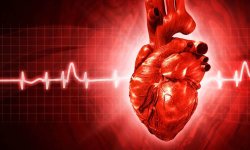
For the heart to work well, blood must flow in only one direction. The heart's valves make this possible. Healthy valves open and close in a precise way as the heart pumps blood. Each valve has a set of flaps called leaflets. Heart surgery is used to fix leaflets that don't open as wide as they should. This can happen if they become thick or stiff or fuse together. As a result, not enough blood flows through the valve. Hybrid cardiac surgery combines cardiac surgery with an interventional (catheter-based) approach. Coronary artery bypass grafting (CABG) is the most common type of heart surgery.
- Bypass Surgery
- Open heart surgery
- Cardiothoracic surgery
- Modern beating-heart surgery
- Heart valve repair
- Carotid artery operations
- Operations of the abdominal and thoracal aneurysm
- Cardiopulmonary bypass machine
- Carotid endarterectomy

The interventional cardiology is the main branch of cardiology that refers to the specific Cather based techniques to various structural heart diseases, non-surgical procedures for treating cardiovascular disease. A large number of procedures can be performed on the heart by catheterization. This most commonly involves the insertion of a sheath into the femoral artery (but, in practice, any large peripheral artery or vein) and cannulating the heart under X-ray visualization (most commonly fluoroscopy).
- Cardiac catheterization
- Angioplasty/Percutaneous coronary intervention
- Stents
- Embolic protection
- Percutaneous valve repair
- Balloon valvuloplasty
- Atherectomy
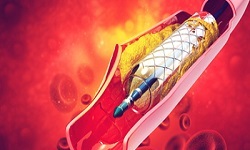
Cardiac nursing is a nursing specialty that deals with patients who suffer from various conditions of the cardiovascular system. Cardiac nurses help treat conditions such as unstable angina, cardiomyopathy, coronary artery disease, congestive heart failure, myocardial infarction, and cardiac dysrhythmia under the direction of a cardiologist. They may monitor and treat acutely ill patients, or they may focus on cardiac rehabilitation—helping patients make lifestyle changes to prevent the worsening of their disease.
- Cardiac assessment nursing
- Cardiac surgery nursing
- Telemetry care
- Electrophysiology
- Stress test evaluations
- Pediatric cardiac nursing

A thorough understanding of onco-cardiology or cardio-oncology is essential for the effective treatment of cancer patients. Virtually all antineoplastic agents are related to cardiotoxicity. All patients who are being considered for chemotherapy, especially those who have a prior history of cardiac disease should undergo a detailed cardiovascular evaluation to optimize the treatment. A definitive point of Cardio-oncology is to discover a harmony between oncologic viability and decreasing unfavorable cardiovascular impacts.
- Advanced cancer therapy
- Malignancy of the heart
- Intra-cardiac tumor
- Cardiomyopathy
- HER2-directed therapy
- Vascular toxicities
- Chemotherapy-related cardiac dysfunctions
- Cardio-oncology programs

Electrocardiography (ECG or EKG) is the process of recording the electrical activity of the heart over the skin. These electrodes detect the tiny electrical changes on the skin that arise from the heart muscle's electrophysiologic pattern of depolarizing during each heartbeat. This record is called the electrocardiogram (otherwise called an ECG), which gives data about the piece of the heart that triggers every heartbeat (the pacemaker called the sino-atrial hub), the nerve conduction pathways of the heart, and the pulse and cadence.
Echocardiography is alluded to as cardiovascular reverberate delivered by the ultrasound waves which thusly make the pictures of the heart.
- Holter (Ambulatory) monitoring
- Event/loop recording
- Cardiopulmonary exercise test (CPET)
- Signal-averaged electrocardiogram
- Heart rate monitor
- Hypertrophic cardiomyopathy
- Pacemaker monitoring
- Electric axis of the heart
- Medical therapies and procedures
- Cardiac surgery and hybrid procedures
- Transthoracic echocardiography
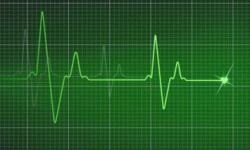
The term "diabetic heart disease" (DHD) refers to heart disease that develops in people who have diabetes. high blood glucose from diabetes can damage your blood vessels and the nerves that control your heart and blood vessels. The longer you have diabetes, the higher the chances that you will develop heart disease. Taking care of your diabetes is important to help you take care of your heart. When cholesterol is too high, then the extra fat in your blood sticks to the walls of your blood vessels. Over time, this fat hardens and is known as plaque. When plaque builds up in the arteries, the condition is called atherosclerosis.
- Diabetic cardiomyopathy
- Hypertension
- Abnormal cholesterol and high triglycerides
- Pre-diabetes
- Types of Strokes
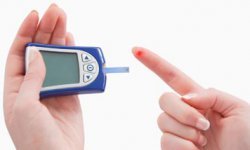
Heart disease is the leading cause of death for women in the United States. The most common cause of heart disease in both men and women is narrowing or blockage of the coronary arteries, the blood vessels that supply blood to the heart itself. This is called coronary artery disease, and it happens slowly over time. The older a woman gets, the more likely she is to get heart disease. Luckily, women can find a way to comprehend their one of a kind side effects of coronary illness and to start to decrease their danger of heart disease. The innate coronary illness have encountered impressive advancement over the most recent couple of years, with advances in new that can be connected at all phases of life from the baby to the grown-up.

The field of cardiology includes diagnosis and treatment of heart failure, congenital heart defects, coronary artery disease, valvular heart disease, and electrophysiology. It is a specialization of Physicians and internal medicine that specialize in this field of medicine are called cardiologists. Clinical trials are part of clinical research and at the heart of all medical advances. Clinical trials look at new ways to prevent, detect, or treat disease. Researchers also use clinical trials to look at other aspects of care, such as improving the quality of life for people with chronic illnesses. Clinical Cardiology forum helps in coordinating the researches in medical diagnosis, cardiovascular medicine, and cardiovascular surgeries.
- Cardiovascular medicine
- Modern practice in cardiovascular therapy
- Application of cardiac progenitor cells
- Percutaneous coronary interventions

During the past two decades, major strides have been made in the diagnosis and treatment of heart disease. Nuclear Cardiology has played a pivotal role in establishing the diagnosis of heart disease and in the assessment of disease extent and the prediction of outcomes in the setting of coronary artery disease. Nuclear cardiac imaging can help determine if there is adequate blood flow to the heart muscle during stress versus rest. It can also evaluate heart function and the presence of prior heart attacks. Among the techniques of nuclear cardiology, myocardial perfusion imaging is the most widely used.
- Cardiac imaging
- Single-photon emission computed tomography (SPECT)
- Positron emission tomography (PET)
- Multi-gated acquisition (MUGA)
- Medical imaging
- Radiopharmaceuticals
- Myocardial perfusion imaging
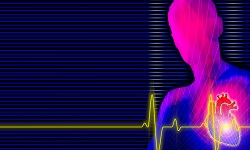
Pediatric cardiologists specialize in diagnosing and treating heart problems in children. In those children who might need heart surgery, pediatric cardiologists work closely with pediatric heart surgeons to determine the best treatments and interventions.
The types of treatment do pediatric cardiologists provide include “Congenital heart disease” (heart differences children are born with), such as holes between chambers of the heart, valve problems, and abnormal blood vessels.
- Congenital heart defects in new-born babies
- Transposition of the great arteries
- Tetralogy of Fallot
- Hypo-plastic left heart syndrome
“Arrhythmias”, or abnormal heart rhythms caused by the electrical system that controls the heartbeat.

Sports Cardiology performs heart screenings that identify potentially serious cardiovascular issues in young athletes. Sudden cardiac arrest (SCA) is the leading cause of death in exercising young athletes, and is most commonly set off by problems—such as structural heart disorders or electrical circuitry issues—which are not usually found during routine physical examinations. doctors in sports cardiology require special expertise and understanding of the physical demands of competitive sports and the psychology of athletes. Sports Cardiology Clinic, a sports cardiologist and exercise physiologist evaluate you and suggests the most appropriate treatments that may allow you to stay active in sports.
- Cardiovascular assessment
- Sports and cardiovascular disease
- Cardiovascular epidemiology & population science
- Frequency and causes of SCA in young athletes
- Improving ECG interpretation in athletes
- Patient-centered counseling
- Accurate diagnosis and treatment plans
- Sudden cardiac death in sports
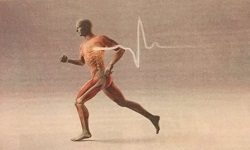
Cardiac regeneration is a broad effort that aims to repair irreversibly damaged heart tissue with cutting-edge science, including stem cell and cell-free therapy. Induced pluripotent stem cell-derived cardiomyocytes (IPS-CMs) may be suitable for myocardial repair. Reparative tools have been engineered to restore damaged heart tissue and function using the body's natural ability to regenerate.
- Tissue graft cardiac cell replacement
- Cardiac stem cells
- Stem cell homing and engraftment
- Cardiac remodeling
- Cardiac stem cells
- Tissue graft cardiac cell replacement
- Cardiac remodeling
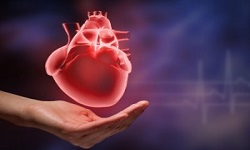
Hypertension is another name for high blood pressure. It can lead to severe health complications and increase the risk of heart disease, stroke, and sometimes death. Hypertension is a primary risk factor for cardiovascular disease, including stroke, heart attack, heart failure, and aneurysm. Keeping blood pressure under control is vital for preserving health and reducing the risk of these dangerous conditions.
The most common causes of hypertension include smoking, obesity or being overweight, diabetes, having a sedentary lifestyle, lack of physical activity, high salt or alcohol intake levels, insufficient consumption of calcium, potassium
- Pulmonary hypertension
- Blood clot
- Pulmonary embolism
- Heart failure

Cardiology Pharmacy focuses on disease prevention and treatment, including evidence-based medication use and related care that improve both short- and long-term outcomes for patients. Cardiovascular pharmacology is the main study of the effects of drugs on the entire cardiovascular system, which includes the heart and blood vessels.
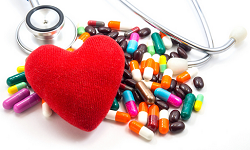
Damage to the heart muscle by a toxin is called cardiac toxicity. Cardiac toxicity may cause arrhythmias (changes in heart rhythm) or it can develop into heart failure. Chemotherapy drugs are toxins and can cause damage to your heart, which may be referred to as cardiac toxicity. The most well-known cause of cardiac toxicity is the chemotherapy drug doxorubicin (Adriamycin®). Cardiac toxicity is diagnosed with several examinations and tests: Heart sounds, Chest X-ray, Electrocardiogram (ECG), Echocardiogram, Multi Gated Acquisition (MUGA) scan.
Heart problems may be prevented by altering the amount of drug administered (dose), method of administration and type of anthracycline.

New tests are always being developed to help the understanding of problems affecting the heart. The demonstrative tests in cardiology are techniques for determining the heart conditions connected with sound versus unfortunate, pathologic.
- Electrocardiogram (ECG). This test records the electrical activity of the heart.
- Stress test. This is also called a treadmill or exercise ECG. This test is done to monitor the heart while you walk on a treadmill
- Transthoracic echocardiogram (echo or TTE). An echo is a non-invasive test that uses sound waves to evaluate your heart's chambers and valves, and how well it pumps
- Transesophageal echocardiogram (TEE). This test is like a transthoracic echocardiogram. But it's done with medicine to help you relax (sedation).

A case report on Cardiology provides an appropriate forum for all cardiologists by rendering their important clinical cases of recent occurrence. Learning from medical cases provides a valuable experience not only for clinicians, but also for students and paramedical staff members. Drugs that are used to treat all the disorders in the body have a great impact on heart causing various adverse effects. Therefore, case reports on diseases and cardiac arrest have a great significance and help in the development and advancement of treatment strategies.
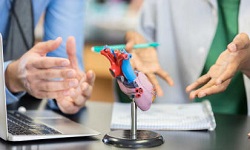
An entrepreneur is an invader, a contender, and a driver. Someone that creates something new, either an initiative, a business, or a company. They are the eventual responsibility for the destiny of its venture, which can be a company, an activity, or any other endeavor. They are the one who has the highest stakes at the venture, thus the one that needs to be empowered to fully direct the endeavor. For cardiology entrepreneurs, this would be a favorable place to find out appropriate investors and partners to begin or expand their business.

Cardiologists are the medical doctors who practice in analysis and treating disorders of the heart. To become a cardiologist, one must contemplate embarking on a long, challenging, and most importantly, fulfilling the journey. A cardiologist is not the same as that of a surgeon. The physicians who perform open heart surgery are cardio-thoracic surgeons, and they gross a surgical residency program, not an internal medicine residency as cardiologists do.
